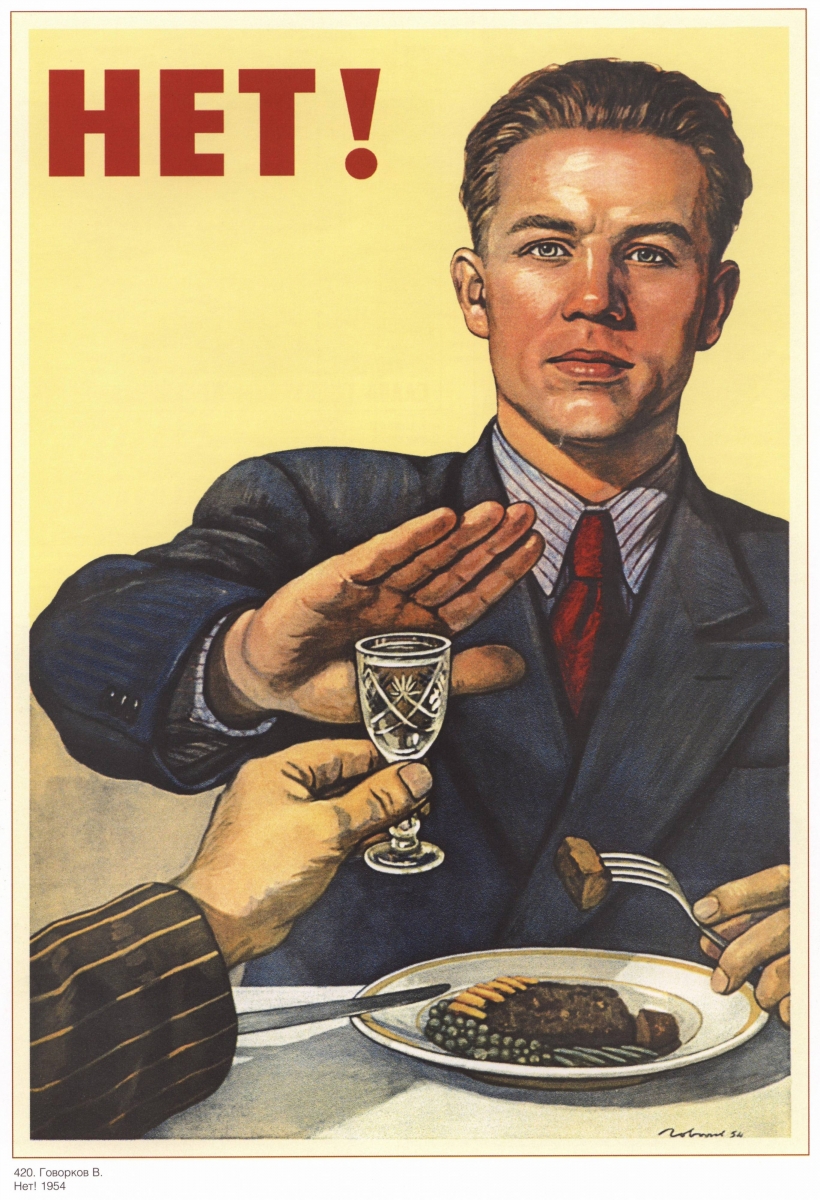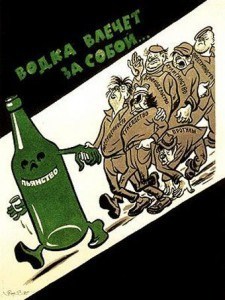Today, alcohol consumption in Russia remains the highest in the world. The high volumes of alcohol consumption have resulted in serious consequences socially, politically and economically. The public health ramifications have been an ever going issue throughout the years and has led to alcoholism to be thought of as a ‘national disaster’. In the 1970’s, alcoholism had been linked to high rates of child abuse, suicide, divorce and a rise of mortality rates, especially among males. It was estimated the two-thirds of murders and violent crimes were committed by intoxicated individuals in 1980 and the death toll from drunk drivers was on an incline. The problem ultimately stemmed from the idea that drinking was seen as a pervasive, socially acceptable behavior in society.¹ Consumption of alcohol holds deep cultural roots in Russia, it often accompanied an array of celebrations, indicated hospitality and created bonds between individuals. It was a source of revenue for the Soviet state, which created tremendous income and was exercised as a monopoly on it’s production and distribution.¹ With the negative ramifications growing and society being impacted as a whole, Mikhail Gorbachev thought he had the solution.

A classic poster from a previous anti-alcohol campaign
Mikhail Gorbachev was not only known as the General Secretary but became known as the ‘mineral’nyi sekretar’ (mineral-water-drinking secretary).¹ In May of 1985, less than two months after becoming General Secretary of the Communist Party, Gorbachev launched a campaign against alcohol abuse. It introduced ‘partial prohibition’, the prices of vodka, wine and beer were increased and their sales were restricted to certain times of the day.² It also included limiting the kinds of shops that were permitted to sell alcohol which resulted in the closings of distilleries and vineyards. Even official Soviet receptions became alcohol-free events. Ultimately, the campaign had an effect on alcoholism country wide. It improved quality of life measures however it was very unpopular among the population.
Economically it was detrimental to the state budget since the alcohol production migrated to the black market. It also contributed to the sharp increase in the production of moonshine and the use of more dangerous substances.² The decline in state revenue created a major budgetary imbalance that led to printing more money which fueled inflation.¹ Eventually all these reasons led to the campaign being abandoned after 1987 and the legal use of alcohol being reintroduced.
¹ “Anti-Alcohol Campaign.” Seventeen Moments in Soviet History, 2 Sept. 2015, soviethistory.msu.edu/1985-2/anti-alcohol-campaign/.
² Vasinsky, A. “WHO PERMITTED THE PROHIBITION?-POLEMICAL REFLECTIONS ON THE FORBIDDANCE COMPLEX.” EVXpress – WHO PERMITTED THE PROHIBITION?-POLEMICAL REFLECTIONS ON THE FORBIDDANCE COMPLEX – Current Digest of the Russian Press, The , 1987 , No. 52, Vol. 38, dlib.eastview.com/browse/doc/19994679.
Cover photo: Anti-Alcohol Campaign Poster “Socially Harmful”

Gabrielle, great job writing about “partial prohibition!” What a short-lived campaign – it’s crazy how much longer complete Prohibition lasted in the U.S. than partial prohibition did in the Soviet Union. Also, great use of visuals!
LikeLiked by 1 person
Thanks! There were really good visuals when researching this topic.
LikeLike
I like the way you highlight the multiple drawbacks of the anti-alcohol campaign! Lara also wrote about this, but from a slightly different angle. One question I always have about this issue is: “how could it have been done better?” I mean, we assume that drinking less alcohol is probably a good thing — so what’s an appropriate / effective way to accomplish that? Was the anti-alcohol campaign an effort to legislate a social problem away?
LikeLiked by 1 person
It always is tricky to think of a way that can be effective! I do think the anti-alcohol campaign was an effort to legislate social problems but like stated above, people found illegal alternatives. I thought regulating the time of sales of alcohol could be an effective idea however again people would find ways around this as well. Maybe harsher laws for people intoxicated in public or driving could be found useful. All in all, I think it will always be a controversial topic!
LikeLike
I actually also wrote about this topic, and enjoyed reading your post about it. I agree with Dr. Nelson. How do we effectively tackle drinking problems, or in fact, any other substance abuses, without it backfiring?
LikeLiked by 1 person
Great post, Gabrielle! It is so interesting that you took a deeper dive into a part of the history of alcohol in Russia. I find it so interesting to see just how entangled alcohol consumption is with the well-being of the economy. The partial prohibition seemed to really backfire for the government and looked like it made things worse economically and in terms of dangerous alcohol consumption (moonshine). It was really interesting to learn about this part of the Russian history.
LikeLiked by 1 person
Good post Gabrielle! I read Lara’s post, which discussed the same topic as your blog post. I think it’s interesting that this campaign had good intentions for improving the lives of Soviet citizens, but the results of the partial prohibition made things drastically worse off for the people and the economy.
LikeLiked by 1 person
Hey Gabrielle. This post a very interesting and eye widening. I never full understood the campaign of prohibition in the Soviet Union until now. It really shows that, no matter the era and/or nation, people are still horrible at governance. This part of Soviet history is a very important one, for it predicts the dissolution.
LikeLiked by 1 person